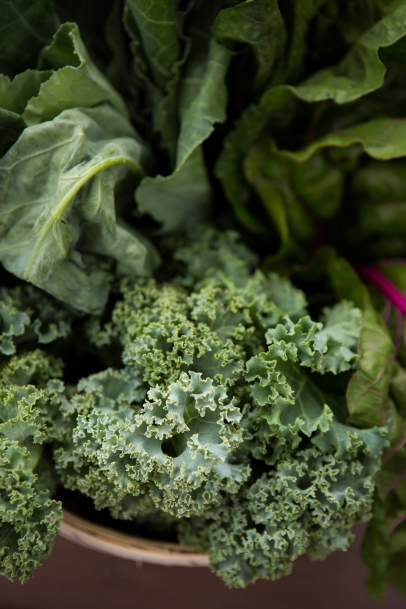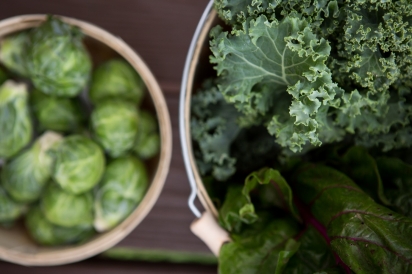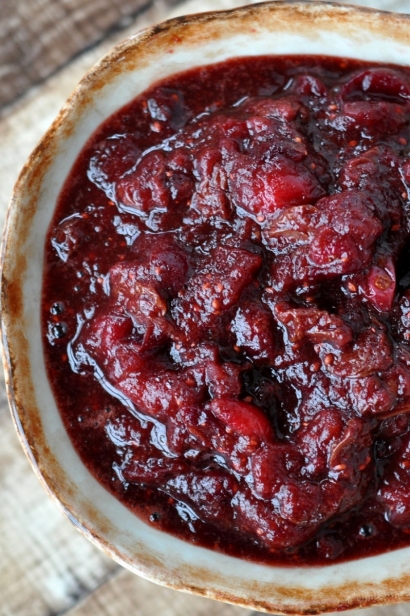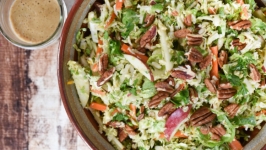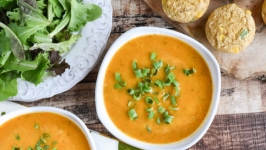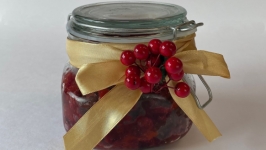Five Vegetables for Your Harvest Table
Cooking the harvest together is a way for us to connect to foods at their peak of perfection and nutritional value. Most Americans eat on the go and consume high levels of processed foods. It is no coincidence that as our intake of packaged, processed foods has increased, so too have diseases like heart disease, diabetes and obesity.
Getting into the kitchen doesn’t have to take crazy amounts of time. Keep things simple and focus on plant-based dishes. Soups and stews are one-pot dishes that make great meals when paired with a salad. They also freeze perfectly, making them my favorite to batch cook and have on hand for fast weeknight meals or lunches.
Also, ideal for batch cooking: veggie burgers. We make our own with in-season ingredients and then freeze them. They are a great last-minute meal idea, that can be made so much healthier than those you’d purchase in the store.
Here are some great suggestions for veggies that should be on your harvest table as well as their health benefits.
GREENS (kale, Swiss chard, collards, and spinach)!!!
You can't eat these babies enough! They're jam-packed with practically every vitamin imaginable: vitamin A (yes, underneath those green colors are carotenoids packed with antioxidants), vitamins C, E and K, plus folate, calcium, magnesium, potassium, iron, protein and fiber. Besides, they're downright gorgeous. Nothing is easier or cheaper to grow than greens. Even in Buffalo, where the first question I'm always asked is "How much snow do you have?" we can grow them from March to December.
How to prepare: Sauté in water just until bright green, or chop and eat raw. The less you cook your greens, the more nutrients they maintain.
BRUSSELS SPROUTS/BROCCOLI/CAULIFLOWER
These darlings all fall into the category "cruciferous" vegetables. They’re at their peak right now, preferring the cold snaps at night to heighten their sweetness. They offer all of the same nutrients as greens, just slightly less. However, Brussels sprouts and broccoli provide vitamin C, even more than an orange (broccoli, 135 percent DV and Brussels sprouts, 129 percent DV). They're also very easy to grow.
How to prepare: Shred and eat raw or roast with some balsamic vinegar, salt and pepper.
WINTER SQUASH
There are so many varieties including butternut, acorn, buttercup, kabocha, hubbard, spaghetti, delicata—and of course the prize, pumpkin. All are packed with vitamins A, C and B-6, and are sources of magnesium, calcium and fiber. Their rich orange color is attributed to their vitamin A content from carotenoids, prized for their antioxidant and cancer-preventive properties. Squash is great roasted, cooked and pureed to be used in soups, or as a base for risotto.
How to prepare: Peel and cube. To roast, drizzle with a little fresh orange juice, salt, pepper and some ground sage. Roast covered with foil at 375 until softened. If desired, finish with a little maple syrup or an espresso vinegar. They are also great in combination with root vegetables.
ROOT VEGETABLES (carrots/parsnips/beets/sweet potatoes)
Root veggies are sweet and delicious and can even be harvested later in the season as they are protected by being underground. At our house, it's the kids' job to harvest the root veggies, and we're always sad when they've all been eaten. Contrary to popular belief, carrots come in many colors: yellow, orange, white and red/purple—as do beets: yellow, red and swirled. The darker the color, the higher their carotenoid (vitamin A) levels. Beets are very high in iron as well, and please don't waste those greens! If you receive beets from the store or your CSA, cut the greens off right away, then chop and store them in another container, separate from the beetroot. If you leave them on, they’ll wilt and cause the roots to dehydrate as well.
Easy preparation: Dice all root veggies small. Drizzle with orange juice, a little salt, pepper, and ground sage. Toss. Cover with aluminum foil and roast at 375 until tender. Sprinkle with fresh parsley to serve. Root vegetables are delicious when combined with butternut or other squashes.
CRANBERRIES
While not a vegetable, how could I skip this essential harvest time food? Cranberries contain vitamin C and are very powerful anti-inflammatories and antioxidants. Often, they are served covered in sugar. Natural fruit juices can be used instead to help cut their tartness and celebrate their flavor.
I hope this gives you a few ideas for your fall dinner table. I’ll be thankful for a break from the work I do outside, as of now. But I know as soon as the snow begins to fly, I'll be daydreaming about what I will be planting in the spring.
For recipes and more ideas on how to prepare vegetables for your harvest table, visit Garden Fresh Foodie.


